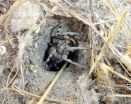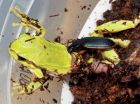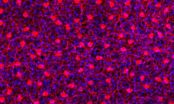Ten Minutes That Could Save Your Life
2011-05-22
Leading Pasadena cosmetic dentist, Dr. H. Robert Stender, urges patients to take advantage of oral cancer screenings. Just because you can't feel it, doesn't mean it isn't there. Just ask the more than 50,000 Americans who were diagnosed with cancers of the head and neck last year. Unfortunately, many Americans do not recognize the symptoms of these life-threatening diseases, which include cancers of the oral cavity, larynx and pharynx, and by the time they are diagnosed, for some, it's too late.
Oral, head and neck cancers claim approximately 12,000 lives per year. ...
A Streamlined Parcel Delivery System is Key to Growth, Says Parcel2Go
2011-05-22
Sustained pressure on consumer spending means companies must make customer satisfaction their top priority, according to the UK's leading online parcel delivery service.
A report released this week by economic think tank Ernst & Young's Item Club predicts that spending across the UK will only rise by 0.6 per cent this year, and by 1.3 per cent in 2012. The club believes consumer spending will not fully recover to pre-recession levels until 2013, meaning businesses will have to work harder than ever to ensure growth.
Parcel2Go, which helps individuals and companies ...
Does eating give you pleasure, or make you anxious?
2011-05-22
Perhaps the most puzzling symptom of anorexia nervosa – a disorder that tends to occur in young women – is the refusal to eat, resulting in extreme weight loss. While most people have a great deal of difficulty in dieting and losing weight, particularly if a diet extends over many months or years, individuals with anorexia nervosa can literally diet themselves to death. In fact, this disorder has a very high death rate from starvation. A new study, now online in the journal International Journal of Eating Disorders, sheds light on why these symptoms occur in anorexia ...
Breaking rules makes you seem powerful
2011-05-22
Los Angeles, CA (May 18, 2011) When people have power, they act the part. Powerful people smile less, interrupt others, and speak in a louder voice. When people do not respect the basic rules of social behavior, they lead others to believe that they have power, according to a study in the current Social Psychological and Personality Science (published by SAGE).
People with power have a very different experience of the world than people without it. The powerful have fewer rules to follow, and they live in environments of money, knowledge and support. People without power ...
Gene-modified stem cells help protect bone marrow from toxic side effects of chemotherapy
2011-05-22
SEATTLE – Although chemotherapy is used to kill cancer cells, it can also have a strong toxic effect on normal cells such as bone marrow and blood cells, often limiting the ability to use and manage the chemotherapy treatment. Researchers at Fred Hutchinson Cancer Research Center reported at today's annual meeting of the American Society of Gene and Cell Therapy in Seattle that one possible approach to reduce this toxic effect on bone marrow cells is to modify the cells with a gene that makes them resistant to chemotherapy.
Hans-Peter Kiem, M.D., a member of the Hutchinson ...
Research provides insight into quality of stored blood used for transfusions
2011-05-22
New research provides evidence for significant differences between new and old red blood cells used for transfusions and could provide a cheap, rapid and effective way to monitor the quality of blood supplies.
Even with preservatives, blood stored in banks continues to age, resulting in biomaterials leaking from the red blood cells and subsequent changes to cell properties and function. There have been concerns raised worldwide about using older stored blood because of questions about various changes believed to affect the quality of the red blood cells. Currently, ...
Spiders suffer from human impact
2011-05-22
Researchers from the King Juan Carlos University (URJC) have carried out a research study published in Biological Conservation, which looked at whether spiders were more tolerant of human impact than other animals. The answer was no: arachnids suffer the consequences of changes to their landscape just like any other animal.
"The abundance and number of spider species is negatively affected by the impact of many human land uses, such as habitat fragmentation, fire and pesticides", Samuel Prieto-Benítez and Marcos Méndez, researchers at the URJC Biodiversity and Conservation ...
Leopoldina makes recommendations to the G8 heads of state and government
2011-05-22
Together with the national science academies of the other G8 states, the German National Academy of Sciences Leopoldina has prepared two statements for the G8 states in the run-up to the G8 Summit of Heads of State and Government. The recommendations contained in these statements were now presented to the participating governments for the negotiations in Deauville, France on 26 and 27 May. In a statement on the topic of "Education for a Science-Based Global Development", the academies urge governments to target investment to establish an infrastructure for a globalization ...
Southampton scientists to help create a sustainable energy system for the UK
2011-05-22
The University of Southampton is playing a key role in a major public/private partnership to evaluate the use of biomass to create a cost effective and sustainable UK energy system for 2050.
Domestic biomass (a renewable energy source from living, or recently living organisms, such as plants, rubbish and wood), sustainably grown in the UK, could provide up to 10 per cent (1) of the UK's energy needs by 2050 and significantly contribute to the reduction of greenhouse gas (GHG) emissions.
Three new bio energy projects launched by the Energy Technologies Institute (ETI), ...
First analysis of invasive plant impacts worldwide
2011-05-22
This week the scientific journal Ecology Letters has published a synthesis of the ecological impacts of invasive plants worldwide. This global analysis has been based on more than one thousand studies that in total describe the impacts of 135 invasive plant species. The lead author, Dr. Montserrat Vilà, a professor at the Spanish Higher Research Council (CSIC) adds: "This assessment would have been impossible to achieve ten years ago, because the evidence was anecdotal, it has only been in the last decade that well designed field studies have been conducted".
Twenty-four ...
Buying 'legal highs' from the Internet is a risky business
2011-05-22
Many drugs sold as 'legal highs' on the internet do not contain the ingredients they claim. Some instead contain controlled substances and are illegal to sell over the internet. These are findings of Dr. Mark Baron, who bought a range of tablets from different websites to see what each contained. The study is published today in the journal Drug Testing and Analysis.
"It is clear that consumers are buying products that they think contain specific substances, but that in reality the labels are unreliable indicators of the actual contents," says Dr. Baron, who works in the ...
Small insects attacks and kill amphibians much bigger than themselves
2011-05-22
VIDEO:
Wizen and Gasith's current study shows that adult Epomis beetles can prey upon live amphibians, in addition to their regular diet.
Click here for more information.
New findings of researchers from Tel-Aviv University show that predator-prey interactions between ground beetles of the genus Epomis and amphibians are much more complex than expected. The study was published in the open access journal Zoo Keys.
"Amphibians are typical insect predators and their diet ...
Better buildings for extreme climates will be focus of researcher's talk
2011-05-22
Rima Taher, an expert in the design of low-rise buildings for extreme winds and hurricanes, will speak next week at the Annual Conference of Construction Specifications Canada (Devis de Construction Canada) in Montreal. Taher, a university lecturer in NJIT's College of Architecture and Design, is a civil and structural engineer, http://www.njit.edu/news/experts/taher.php. Construction Specifications Canada (http://csc-dcc.ca) is a national, non-profit association with chapters across Canada. Its mission is to deliver and develop quality educational programs, publications ...
Iowa State engineer scales up process that could improve economics of ethanol production
2011-05-22
AMES, Iowa – Iowa State University's Hans van Leeuwen has moved his research team's award-winning idea for improving ethanol production from a laboratory to a pilot plant.
Now he knows the idea, which produces a new animal feed and cleans water that can be recycled back into ethanol production, works more efficiently in batches of up to 350 gallons than on a lab bench.
"We're learning we can reliably produce good quality and good quantities," said van Leeuwen, Iowa State's Vlasta Klima Balloun Professor of Engineering in the department of civil, construction and environmental ...
Diet high in vegetables and fruit associated with less weight gain in African-American women
2011-05-22
(Boston) - Investigators from the Slone Epidemiology Center at Boston University have reported that African American women who consumed a diet high in vegetables and fruit gained less weight over a 14-year period than those who consumed a diet high in red meat and fried foods. This is the first prospective study to show that a healthier diet is associated with less weight gain in African American women, a population with a high prevalence of obesity. The study results, published in the American Journal of Clinical Nutrition, were based on data from the Black Women's Health ...
Poor understanding of anesthesiologist's role during labor may affect maternal and fetal outcomes
2011-05-22
TORONTO, Ont., May 20, 2011 – Today, one in four or five women in Ontario will give birth through a cesarean or "C-section." A new study, led by researchers from St. Michael's Hospital and The Wilson Centre for Research in Education and the Department of Anesthesia, University of Toronto, has found that many labour and delivery health professionals lack a clear understanding of the anesthesiologist's role as a physician with specialized skills in the management of seriously unwell pregnant patients. This role misperception may affect the quality of care delivered to mothers ...
UK Espresso Cups Retailer Espresso Deco Launches in the Age of the 'Home Barista'
2011-05-22
A new company has launched in the United Kingdom providing quality Espresso Cups to consumers in Europe via their website. Espresso Deco aim to establish an ecommerce business using a mix of traditional and new marketing techniques coupled with high standards of customer service and quality products.
The company was conceived due to the increasing popularity of coffee shops in the UK and the rise of the 'Home Barista'. With an established variety of consumer choice in espresso machines already Espresso Deco are focused on delivering value in retailing espresso cups from ...
Enlarged prostate: Study demonstrates immediate and long-term benefits of laser treatment
2011-05-22
New research presented at the Annual Meeting of the American Urology Association (AUA) in Washington, DC demonstrates that holmium laser therapy is a safe and durable treatment option for Benign Prostatic Hyperplasia (BPH) – an enlargement of the prostate that affects most men as they age. The study, conducted by researchers from the McGill University Health Centre (MUHC), is the longest comprehensive assessment of this technology to date, and researchers suggest it may now safely be considered the new, size independent, gold standard for treatment of BPH.
A man's prostate ...
Wildlife in trouble from oil palm plantations, according to scientists
2011-05-22
Forest fragmentation driven by demand for palm oil is having a catastrophic effect on multiple levels of biodiversity, scientists from Queen Mary, University of London have discovered.
The researchers are worried that unless steps are taken to safeguard and manage the remaining forest, then certain species will struggle to survive.
The study, which focused on bats as an indicator of environmental change, was published in one of the leading scientific journals, Ecology Letters.
The team conducted bat surveys in pristine forest and also in forest patches of varying ...
UCSB scientists make strides in vision research
2011-05-22
(Santa Barbara, Calif.) –– New research at UC Santa Barbara is contributing to the basic biological understanding of how retinas develop. The study is part of the campus's expanding vision research.
The new studies are published in recent online versions of The Proceedings of the National Academy of Sciences (PNAS), and Investigative Ophthalmology and Visual Science (IOVS).
The scientists document how they used mice as a research model organism to show that the size of different populations of retinal neurons display wide-ranging variability among individuals. In the ...
How to Find a Qualified Plastic Surgeon
2011-05-22
If you are considering plastic surgery, it is imperative that you choose a qualified and highly experienced surgeon to perform your desired treatment. Not only will a qualified surgeon be able to give you optimal results, if there are any complications during surgery, he or she will know how to handle that situation. The more experience a Northern Virginia plastic surgeon has, the more time that professional will have to perfect their skills.
Advice for Choosing a Plastic Surgeon
To ensure that you choose one of the best plastic surgeons in your area, here are a ...
Dangerous Truck Drivers Fall Through the Cracks of the CSA Program
2011-05-22
In late 2010, the Federal Motor Carrier Safety Administration (FMCSA) implemented an extensive new program to improve safety in the commercial trucking industry. Known as the Compliance, Safety, Accountability program, the initiative focuses on identifying and sanctioning trucking companies with track records of risky driving in order to prevent future trucking accidents.
The CSA program evaluates trucking companies and keeps track of individual drivers. But, even though individuals are monitored, gaps in the system may allow unsafe truckers to remain behind the wheel.
The ...
Childhood cancer survivors at higher risk for future GI complications
2011-05-22
Individuals who are treated for cancer during childhood have a significantly higher risk of developing gastrointestinal (GI) complications – from mild to severe – later in life, according to a study led by the University of California, San Francisco. The findings underscore the need for childhood cancer survivors and their physicians to be aware of these risk factors to ensure patients' ongoing health care needs are met.
"We have, in a relatively short period of time, made remarkable progress in treating pediatric cancer, which has resulted in a growing population of ...
High iron, copper levels block brain-cell DNA repair
2011-05-22
GALVESTON, Texas — No one knows the cause of most cases of Alzheimer's, Parkinson's and other neurodegenerative disorders. But researchers have found that certain factors are consistently associated with these debilitating conditions. One is DNA damage by reactive oxygen species, highly destructive molecules usually formed as a byproduct of cellular respiration. Another is the presence of excessive levels of copper and iron in regions of the brain associated with the particular disorder.
University of Texas Medical Branch at Galveston researchers have discovered how ...
Industry Objections May Have Delayed NHTSA Pedestrian Safety Measure
2011-05-22
A proposed federal measure to improve motor vehicle safety will be delayed by nearly a year. The National Highway Traffic Safety Administration (NHTSA) was expected to publish a rule in late February of 2011 creating a phased-in requirement for backup cameras on cars and trucks sold in the U.S. But NHTSA recently requested another 45-day commentary period, and told Congress that the rule could be delayed by ten months.
The rule will require that ten percent of new vehicles be equipped with backup cameras by September 2012, increasing to 40 percent a year later with full ...
[1] ... [7227]
[7228]
[7229]
[7230]
[7231]
[7232]
[7233]
[7234]
7235
[7236]
[7237]
[7238]
[7239]
[7240]
[7241]
[7242]
[7243]
... [8705]
Press-News.org - Free Press Release Distribution service.




